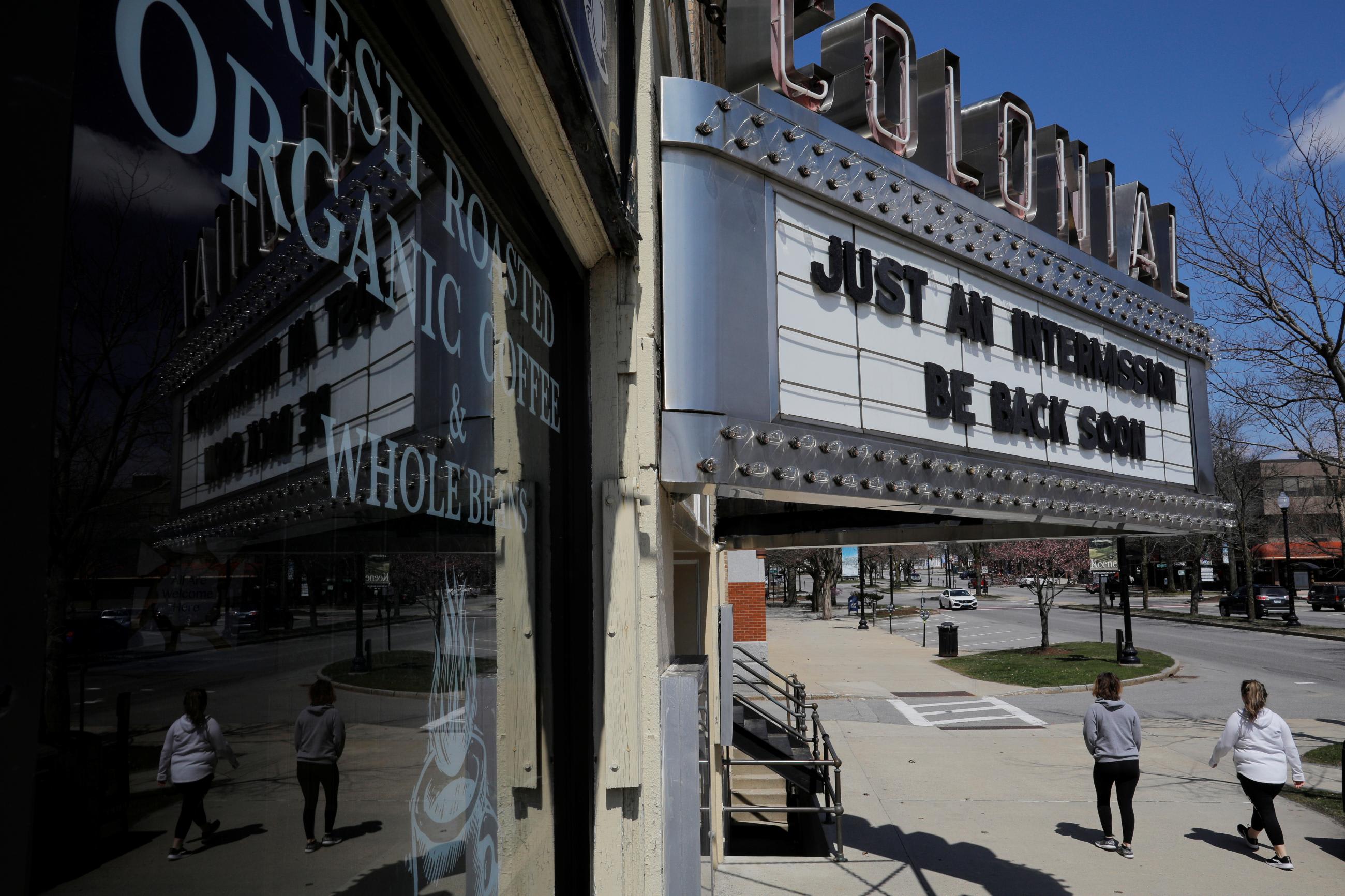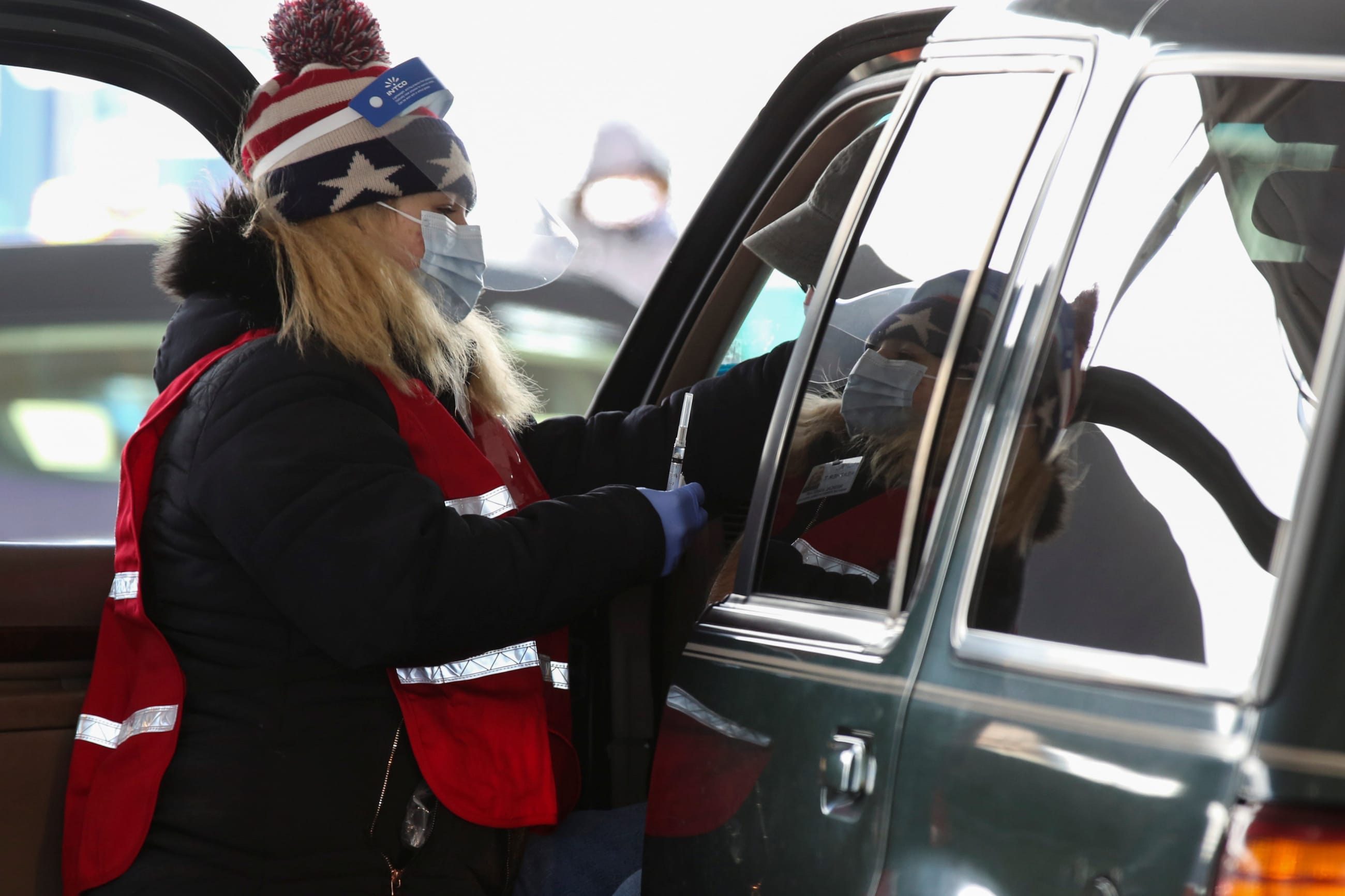On a dreary morning in 2020, as nursing homes across the country began experiencing their first large wave of COVID-19 deaths, New Hampshire's state health commissioner met in the state capital of Concord with a team of physicians and public health experts in a deserted coffee shop in a hotel that had been transformed into an operations center for the state's COVID-19 response. In normal times, presidential candidates might have been stumping in the hotel's ballroom in advance of the first-in-the-nation primary. Now the center had hundreds of pop-up desks for public health workers and active-duty National Guard troops who were coordinating testing, contact tracing, and assistance for persons diagnosed with COVID-19.
The meeting had been rapidly convened to determine how to better protect New Hampshire's nursing facility residents. New Hampshire was already ahead of its peers in some respects. It was the first state to deploy the most accurate tests — polymerase chain reaction, or PCR — on a wide scale for all nursing home residents in the hardest-hit counties. That early effort, undertaken by private contractors who traveled from facility to facility, was inefficient and insufficiently resourced, however. The state's public health leaders knew that the challenges ahead would require recurrent PCR testing of all long-term care patients and staff statewide so that patients could be housed in units based on their COVID-19 status. They needed a new approach.
New Hampshire's residents report the highest level of interpersonal trust, which could result from the state's culture and form of government
Furthermore, labs across the country were backlogged processing the growing number of PCR tests, and the federal government had just announced newly developed rapid antigen tests were being sent to nursing homes as a substitute. This worried the state's public health team. Although the antigen tests were quick and easy to use, they were not accurate enough to determine when it was advisable to send an asymptomatic, frail nursing home patient to a wing of a nursing facility where other patients and staff had active COVID-19.
The team agreed that the state should both contract with all labs that had the capability to process PCR tests and set up its own nursing home COVID-19 testing program to routinely perform screening PCR tests for everyone who lived and worked there. In addition to contracting with multiple national companies, the state dramatically expanded the capacity of the University of New Hampshire's lab. As a result, every New Hampshire nursing facility soon began PCR testing of all residents and staff, a contrast with other states, which found themselves stuck with antigen tests instead. New Hampshire's state-run program ensured short turnaround times for test results and was an accurate guide for making critical decisions for the well-being of nursing home residents, protecting as many people as possible from exposure to COVID-19. This is just one example of how New Hampshire bucked the messaging and programming advanced by the federal government and adopted by other states.
The data bears out the state's approach. A recent study published in The Lancet found that state mortality rates during the pandemic varied widely. Some U.S. states experienced much more dire situations than others. New Hampshire, which has an older population and typically a middle-of-the-road mortality rate, might have been expected to fare poorly. Yet, as of July 2022, New Hampshire had among the fewest COVID-19 deaths per capita in the country, second only to the naturally isolated state of Hawaii. If every state had performed equally well, the United States would have had 40 percent fewer deaths by that time, saving half a million lives. This raises the question of what can be learned from this small, aging state.

The study's authors identified one major advantage: New Hampshire's residents report the highest level of interpersonal trust, which could be tied to the state's culture and form of government. New Hampshire has the third largest legislature in the world, with 424 state representatives and senators (only the U.S. Congress and the British Parliament are larger), and its executive branch includes five councilors to represent different regions of the state.
The state's COVID-19 response may have been coordinated at the state level, but activities were rooted locally. At the onset of the pandemic, testing and isolation were two of the few tools to control the spread of the disease. Given that each state representative represents about 3,300 residents and Granite Staters are accustomed to meeting presidential candidates on multiple occasions, New Hampshire residents rightly expect local services to be widely available in small communities in every nook and cranny of the mountainous state.
Whereas other parts of the country quickly grew accustomed to long lines for testing or shortages of test kits, New Hampshire residents generally had ready access and relatively quick turnaround times, thanks to drive-through sites for PCR testing quickly set up and operated by the New Hampshire National Guard and private contractors. Later on in the pandemic, the state initiated the first free statewide program for delivering rapid antigen tests directly to homes, a model the federal government replicated.
New Hampshire also leveraged international contacts to procure enough personal protective equipment for its health-care workers, and even helped supply the U.S. Department of Veterans Affairs at a time when it was in short supply amid reports of fraudulent goods.
Sununu issued the first executive orders expanding access to telemedicine for all medically necessary services
The care New Hampshire's hospitals provided during the pandemic was also remarkably coordinated and consistently high quality. Governor Chris Sununu and State Epidemiologist Dr. Benjamin Chan held frequent press conferences to relay timely information and behind the scenes, public health leaders were involved in all decision-making. The state created a hospital resources dashboard and convened chief executive officers, medical officers, and nursing officers of all thirty-one hospitals in the state on daily calls. This helped share resources and balance demand to ensure that no one hospital was overwhelmed with patients.
New Hampshire was quick to innovate in other ways. On March 18, 2020, soon after the first COVID-19 case was diagnosed in the state, Sununu issued the first executive orders expanding access to telemedicine for all medically necessary services, ensuring that they could be rendered by phone and with payment parity for providers. Federal health programs and almost every other state soon replicated the orders, and Americans now expect this expanded telemedicine service as part of their regular health-care system.
Granite Staters also took a different approach to social isolation. Given the numerous state and local parks, pristine lakes, and beautiful stretch of Atlantic coastline, they headed outdoors, as health officials advised, whether to hike trails and or roll along wheelchair accessible paths. Since the start of the pandemic, the state's popularity as an outdoor destination has surged.

When vaccines rolled out, New Hampshire again took a road less traveled. Rather than rely on an overwhelmed health system, the state took on the role of primary vaccinator. Prioritizing speed of administration, New Hampshire set up vaccination sites in communities throughout the state and contracted private vendors to run pop-up sites and mobile vaccination vans. It also ran mass vaccination events at the New Hampshire Motor Speedway, where Sununu and former Health Commissioner Lori Shibinette drove an orange convertible and were publicly vaccinated to great fanfare.
New Hampshire did not follow national recommendations to prioritize vaccination for all frontline workers. Instead, it initially prioritized health-care workers, long-term care facility residents, and the age and population groups most vulnerable to COVID-19. These decisions contributed to New Hampshire's having the fastest vaccination rollout of any state in the country.
When therapeutics became available, New Hampshire again prioritized access for the most vulnerable, including nursing home patients. As the omicron wave began, the state prepared and implemented a plan emphasizing booster vaccinations, community access to therapeutics, and adequate staffing at health-care facilities.
New Hampshire's low COVID-19 mortality rate can't be attributed to any single factor. The state was fortunate for its existing levels of public trust, which made it easier to mobilize against a pandemic together. But common themes of its practices are worth remembering: protecting those most at risk of death, balancing competing priorities, remaining nimble and adjusting the response over time, and ensuring interventions were locally tailored and widely accessible.













